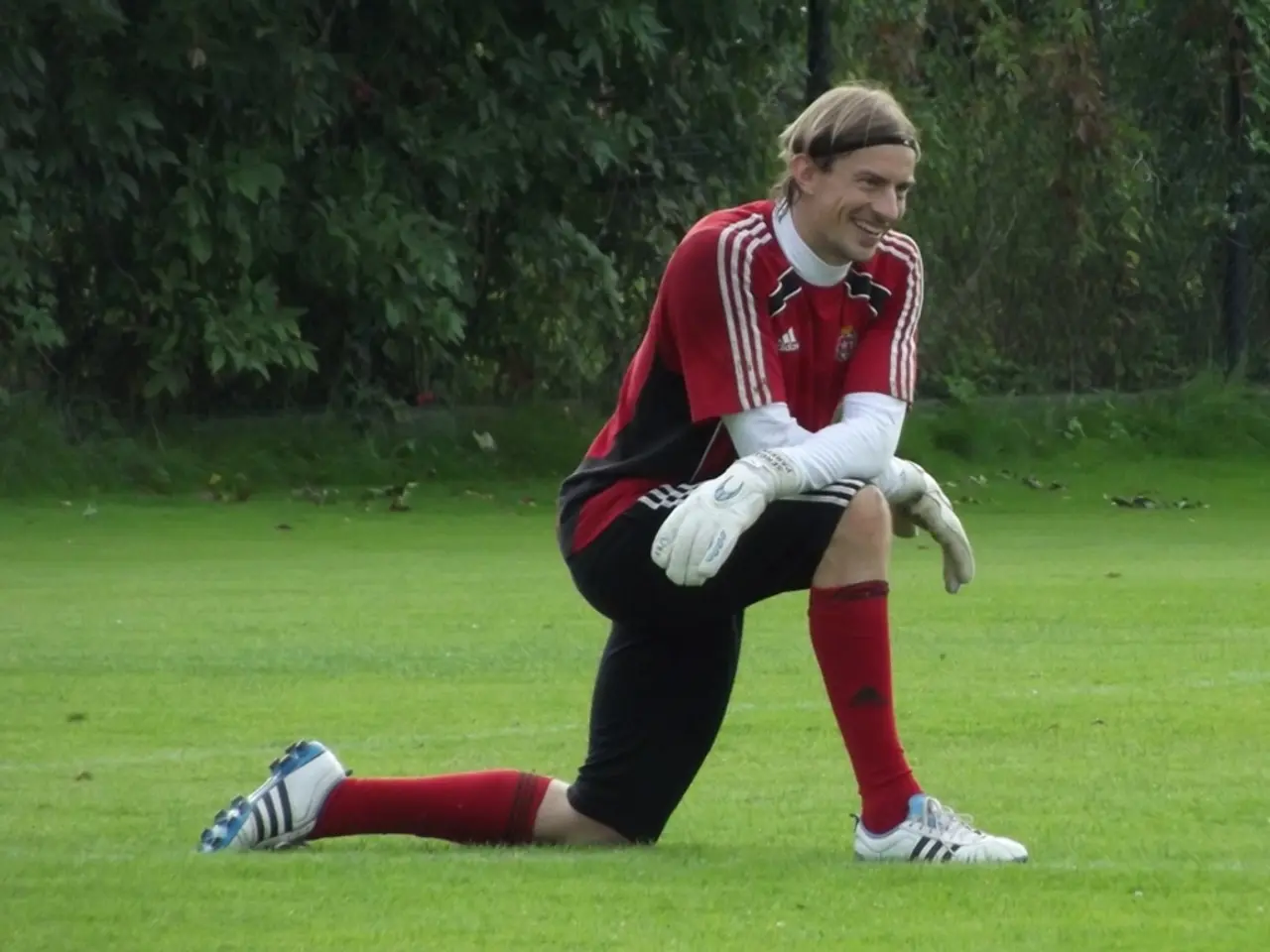Knee discomfort in the front area: Exploring origins, triggers, and indicators
Anterior knee pain, also known as patellofemoral pain syndrome (PFPS) or "runner's knee," is a common condition that causes discomfort or pain felt behind or around the kneecap. This pain is often the result of overuse, excessive mechanical load on the patellofemoral joint, and biomechanical factors such as muscle imbalances or weakness, especially in the quadriceps, hamstrings, and hip muscles.
The symptoms of PFPS typically include pain around or behind the kneecap, often worsened by activities like climbing stairs, squatting, kneeling, or sitting for prolonged periods. Other symptoms may include a popping or cracking sensation in the knee, tenderness and sometimes swelling around the patella, and a grating feeling or noise (crepitus).
The management of anterior knee pain will depend on the underlying cause. Conservative treatment and lifestyle changes are often effective, including resting the knee, taking painkillers, avoiding activities that trigger the pain, and strengthening and stretching the thigh and buttock muscles. Using shoe inserts to correct flat feet, wearing suitable footwear, using taping to realign the kneecap, and seeking physical therapy or rehabilitation can also help.
In persistent cases, doctors may consider surgery, but this is usually a last resort and only when individuals do not respond to conservative measures.
Early management typically prioritizes non-surgical approaches centered on quadriceps strengthening and functional rehabilitation. Exercise therapy, particularly strengthening exercises for the quadriceps and hip muscles, can help improve muscle balance and stabilize the patella. Addressing biomechanical issues, including foot mechanics and footwear adjustments, and massage therapy to reduce muscle hypertonicity and improve tissue mobility around the patella can also be beneficial.
Physical therapy with a personalized plan to reduce pain, restore function, and improve activity levels is also important. Patient education and psychosocial factors management, as anxiety or fear of movement can contribute to persistent pain, are also crucial aspects of treatment.
A comprehensive medical history is an essential part of diagnosing anterior knee pain, including questions about previous surgeries, activities, other symptoms, and the characteristics of the pain. Doctors may request imaging such as ultrasounds, X-rays, or MRI scans to rule out other conditions.
Healing time for anterior knee pain depends on the cause, but symptoms typically settle over a few weeks. Factors that can cause anterior knee pain include structural or anatomical abnormalities, malalignment or patellar instability, muscle weakness, tightness, or imbalances, overuse or repetitive use of the knee, various medical conditions, and more.
People who exercise often and do more physical or repetitive activities are more likely to have anterior knee pain, such as runners, cyclists, skiers, jumpers, and athletes. The cause of anterior knee pain is often a complex interplay of functional, mechanical, and structural alterations and imbalances.
Physical therapists can help address malalignment, correct compensatory movement patterns, provide a strengthening program to reduce pain and prevent a recurrence, and increase a person's flexibility, strength, and endurance. Anterior knee pain is more common in females and teenagers and young adults.
If you experience knee pain for longer than a few weeks, it is recommended to consult a doctor for an evaluation and a suitable treatment and rehabilitation plan.
- Science has been investigating the causes and effective treatments for anterior knee pain, also known as patellofemoral pain syndrome (PFPS).
- Chronic diseases like cancer or neurological disorders can contribute to various forms of pain, including pain in the knee.
- The workplace-wellness movement has been incorporating fitness and exercise into daily routines to help manage pain and promote overall health and wellness.
- In some cases, respiratory conditions or digestive health issues can lead to pain and discomfort in the body.
- Eye health becomes more important as we age, and conditions like cataracts or glaucoma can cause eye pain.
- Hearing loss or tinnitus can be uncomfortable and may be a sign of underlying medical conditions.
- Taking care of skin conditions is essential to maintain proper skin care, particularly during sports activities to prevent injuries.
- Mental health and men's health are becoming increasingly discussed topics in medical communities, with therapies and treatments readily available for various mental health issues.
- Weight management is crucial to ensuring cardiovascular health, as excess weight can put added pressure on the knee and exacerbate pain.
- A comprehensive understanding of women's health requires addressing specific conditions like PFPS, along with other issues like sexual health and parenting.
- Nutrition plays a significant role in managing pain, as maintaining a balanced diet can support joint health and overall wellbeing.
- Autoimmune disorders, such as rheumatoid arthritis, can cause pain and inflammation throughout the body, including the knee.
- Early diagnosis and treatment for any medical condition, whether it be PFPS or another chronic disease, can help improve quality of life and promote healing.




